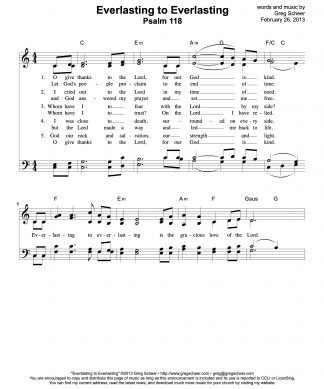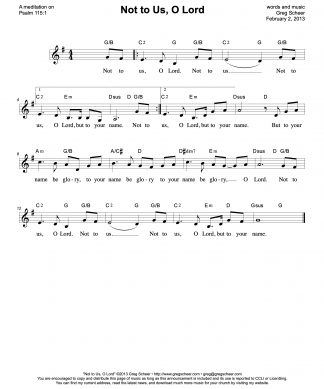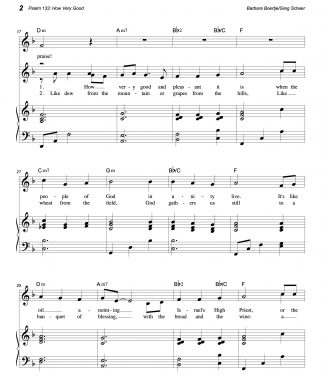
SYNOPSIS: Greg discusses possibilities for Palm Sunday or Passion Sunday services, and why your church might choose one or the other.
EPISODE SECTIONS:
- 0:32 – Two liturgical directions for the Sunday before Easter
- 3:20 – Palm Sunday: traditional choices
- 7:13 – Palm Sunday: newer and global songs
- 14:57 – Options for medleys
- 17:36 – Passion Sunday: Psalm 31, Psalm 118
- 21:29 – Passion reading from Matthew
RESOURCES MENTIONED IN THIS EPISODE:
- Article: Deb Rienstra, “The Problem with Palms”
- Hymns: “Ride On, Ride On in Majesty” (tunes: ST. DROSTANE, WINCHESTER NEW, DEO GRACIAS, THE KING’S MAJESTY), “All Glory, Laud, and Honor,” “Hosanna, Loud Hosanna”
- Contemporary Songs: “I See the King of Glory,” “Hosanna,” “Psalm 31: In You, Lord, I Refuge Take,” “Rejoice and Be Glad” (published in Psalm Songs for Lent and Easter, vol. 2)
- Global Songs: “Sanna, Sannanina,” “Holy Is the Lord/Santo Es El Señor,” “Psallite Deo”
- Songs by Greg: “Hosanna in the Highest” (Jabusch), “Hosanna in the Highest” (UNIQUE CROWN)
- Liturgical Resource: Passion narration from Matthew
TRANSCRIPT
Hello, friends. This is Greg Scheer for the Greg Scheer Music Podcast. We’re going to continue our series that we started previously about Lent. We’re going to continue that with a series on Holy Week. And, of course, Holy Week starts with Palm Sunday. That is the week before Easter.
“More…”Now, when we talk about Palm Sunday we have to start right off the bat by talking about how awkward Palm Sunday is, liturgically speaking. So we’ve been in Lent, which is this somber time of self-reflection and extraordinary devotion, and we are moving into Good Friday and Maundy Thursday and the crucifixion of Jesus, so, obviously the very lowest point of the liturgical year. And right in the middle of all of this valley is this happy blip on the screen, where the children process with palm branches and we sing happy songs and all those kinds of things. And the other awkward thing about Palm Sunday is that we know, because we’re looking back on the story, we know that this procession is going to be very fickle, that the same crowds that were lauding Jesus on Palm Sunday, on his triumphal entry, those same people would be crying, “Crucify him!” a week later. And so, whereas the people in the original Palm Sunday didn’t have that perspective, we have that perspective. And it creates this kind of strange underbelly to whatever we do, whatever celebration that we have.
And, so how do we deal with this issue? I guess if you’re not a liturgical congregation, you don’t celebrate Lent, then you can basically treat Palm Sunday like a mini Easter. We have kind of a warm-up celebration to the big celebration of Easter. And I guess that that’s fine, but I think that that’s missing some richness that is there.
So, let’s think about this. The two directions that we can take on Palm Sunday, or on that, I should say, that Sunday a week before Easter. We can either go the direction of Palm Sunday, or we can go the direction of Passion Sunday. So if you look into liturgical resources, you’ll see that there are actually two routes that you can take. The one is Palm Sunday, where we really emphasize the triumphal entry and the joy, and all of those kinds of things. The other is Passion Sunday, which feels like a foreshadowing of what we’ll experience later in the week during the low points of Maundy Thursday and Good Friday. My friend Deb Rienstra has written about this. She has an article online called “The Problem with Palms,” and it really outlines kind of this weirdness of Palm Sunday well. I’ll have the link in the description below this podcast.
So let’s start by looking at what we can do for a Palm Sunday celebration. So, if we’re going to celebrate Palm Sunday, and, you know, if you are in a normal congregation, I don’t think that you’re really going to get away with saying, “Okay, kids, you don’t get your palms this year. We’re celebrating Passion Sunday. Now sit down and be quiet and somber.” It’s probably going to be unrealistic in most congregations. So what I often recommend is actually that we start with a Palm Sunday celebration, and then shift toward a Passion Sunday type of feel. But we’ll get to that later.
So for a Palm Sunday celebration, obviously you want hosannas of all types. If you type into hymnary.org, “hosanna,” you’re going to get lots and lots of songs. Some of them are specifically for Palm Sunday. Some of them just say “hosanna.” So, for example, the Hillsong, “I See the King of Glory.” That’s one that its chorus is one— “I see the king of glory. . .” And then the chorus goes, “Hosanna, hosanna.” So even though it’s not specifically about Palm Sunday, that one is one that could work on Palm Sunday.
Another one of course, is the tune “Ride On, Ride On in Majesty.” Now, one of the things that I like about this hymn, is that it gets a little bit at the pomp of the moment, but the foreshadowing of the passion. So it says, “Ride on, ride on in majesty, in lowly. . . ride on to die,” is what it says. It’s basically saying that this is the journey, that Jesus knows about it, and then that we know about in retrospect. So that’s a great text, a great hymn text. One of the problems with that song, I think, is that there are not a lot of great tunes that go with it. So there’s ST. DROSTANE, which is very triumphant, so very march-like, and those kinds of things. So it doesn’t really support the passion sides of that hymn text. There’s also WINCHESTER NEW, which is actually quite similar to the previous one, and it’s kind of an unremarkable tune. I think that the person who wrote it is dead, so I can say that and not feel like I’m hurting anybody’s feelings.
Here are some ideas for tunes that might be, that you might not think about matching to that text, but I think work quite well. There’s a tune called DEO GRACIAS, which has a lot of gravitas to it. It’s a minor key, it’s the one that goes [Greg sings] “Ride on, ride on in majesty, in lowly. . . ride on to die.” So it’s kind of a medieval-sounding tune. Another one that I really like is called THE KING’S MAJESTY. It’s by someone named Graham George, and it’s a very dramatic minor melody. It feels like it was written by Ralph Vaughan Williams. And I believe that it actually comes from a movie, because it’s, the copyright is credited to Columbia Pictures. So someone can write in and give me all the details on that. But it’s very dramatic, very cinematic. So those are some ideas with “Ride On, Ride On.”
Let’s see, some other things that you could do, if we want to start branching out from the center. I mean, I don’t need to tell you about “All Glory, Laud, and Honor” and those kinds of things. You know all of those songs. But, so let’s get a little bit off the beaten path. So we can go in kind of a Jewish or, what would you say, Klezmer kind of groove with “The King of Glory Comes.” That’s, but the text is by Jabusch is his name. And that’s a good one. It’s the. . . [Greg sings.] That one is quite good. I like that one a lot. I have written a different text to that, which goes “Hosanna in the highest. . .” And then it’s got some very specific Palm Sunday verses. So you can look that one up on my website.
The thing that I like about that is that it’s a tune that people know, and it’s also a tune that you can stretch during a palm processional. So sometimes, when you’re planning music for a palm procession, you really don’t know how many kids are going to be there, are they going to form double lines or single lines, are they going to move fast or slow. It’s really one of these conundrums, these practical conundrums of leading worship on Palm Sunday. But that is one that goes chorus, verse, chorus, verse, so you can do all sorts of things to stretch it out or to trim it back. So that’s something to keep in mind for that one.
Another variation on that is another one that I did, which, I kind of, at a certain point, said, “Well, maybe I should just leave that Jewish tune alone, and think about using my text or some kind of variation on that text that I wrote, the Palm Sunday text, and do a more traditional hymn-like tune.”
Hosanna in the highest.
Hail the one who saves us
O blessed is the one who brings
The kingdom of heaven.
Who is the King of kinds, the Lord God Almighty?
God’s reign is coming
Hosanna in the highest. . .
I think that one is quite learnable, and then also serves as a good Palm Sunday, palm procession song. One issue with teaching songs like this, on the spot on Palm Sunday, is that Palm Sunday only happens once a year. And so this is one of these liturgical problems that we have, is that, whereas normally we can introduce a hymn, say, some of the hymns that I suggested, during Lent. You can introduce that the first week of Lent, and then sing it the second week of Lent, and then give them a week off, and then bring it back the fourth week of Lent. And so by then, it’s kind of become something that they are familiar with.
The problem with some of these once a year celebrations, like Palm Sunday and Ascension, and those kinds of things, is that we get one shot to do the songs. And so if you’re going to teach something new, you might think about having your choir or your praise team lead it, maybe lead significant chunks of it before you ask the congregation to come in. Or, plan to do it every single year for the next three to five years, and then people will start to say, “Oh, this sounds familiar.” And then they’ll say, “Oh, they’re playing my favorite song!” Anyways, think about that, as I, I’m going to tell you all these new songs that you can do on Palm Sunday, but just kind of go easy on your congregations with these things.
Another song a little bit further off the beaten path is one from South Africa called “Sanna, Sannanina,” and it’s kind of a playful take on the words “hosanna.” It’s kind of like, think like a children’s game of the word “hosanna.” So it’s “Sanna, sannanina, sanna, sanna, sanna.” It’s fairly clear what you’re saying when you’re saying that, that you’re saying hosanna in a different language. And, so that song appears in a number of hymnals, and I have created a version of that that actually works as a Sanctus. So, “Holy, most holy Lord. . .” So if you are a fairly liturgical congregation that sings a Sanctus during your worship, then think about that. You can find that in published form in the Presbyterian Glory to God, #597. I also have a version for piccolo.It’s for piccolo and djembe, and you can also kind of blend in congregation. And this is another way that you can take a song and really extend it with different instruments.
Staying in the global theme, there’s another one that I really like. It’s from Guatemala, and it’s “Holy Is the Lord.” And it’s, has a verse that says, “Hosanna, hosanna.” And it’s a beautiful piece. It appears in a number of hymnals. I think that number might be two. So it’s not super common. It’s in the book that I edited about a decade ago called Global Songs for Worship, and I think it appears in some other ones after that. Now that one, again, I have a rendition of that for choir and flute, and I’ve added, when I’ve done it in the past, I’ve added some simple Latin percussion to that. And so that would be one that if you want to introduce that song, you could introduce it by having the choir sing it, and then the next year have the people sing it. And actually, that’s not so Palm Sunday specific that you can’t use it at other times in the year.
And so those are some ideas of things that you can do that are a little bit, a little bit different twist. And I really like those global songs, because, once again, you can add or subtract to them a little bit more easily than you can with a hymn. Another thing I like to do: I always try to push the idea that global music is not some kind of weird thing that we do as some kind of experiment, and then we’re done with it and we move on. But instead I try to enmesh it in the fabric of my congregation’s worship life. So one way to do that is to put some of these global songs in medley with other songs. And I’ve found some that work really well for me.
So, for example, “The King of Glory Comes,” that we talked about, you could use that one, or the Guatemalan “Santo,” which is also, both of those are in E minor. That Guatemalan one goes, “Santo, santo, santo, santo, santo es el Señor.” So either one of those that’s in E minor, they work very well in medley with “Hosanna, Loud Hosanna” in the key of G. Often it’s written in A-flat, but there are a number of published versions in G. So that has often been my whole palm procession, is one of those global songs and then “Hosanna, Loud Hosanna.” Another one that works with “Hosanna, Loud Hosanna,” is Carl Tuttle’s “Hosanna, hosanna, hosanna to the King of kings. . .” Right? So that’s kind of an old-school tune, but to pull that out once a year is not a bad thing at all, and especially when it’s in medley with something. I’ve used it as a chorus with “Hosanna, Loud Hosanna,” where we just go back and forth between those two.
Another thing, another medley that can work is the South African “Sanna, Sannanina” combined with “All Glory, Laud, and Honor.” They’re both in B-flat, so they just kind of blend right back and forth to each other. So something I’ve done is, for congregations that know “Sanna, Sannanina,” I’ll just start singing that, and that will be the bulk of our palm procession. And I’ll time that out until we’re basically done, and then I just segue right into “All Glory, Laud, and Honor.” And that makes a real regal start, you know, the organ can come in, and all those kinds of things.
So those are some ideas about how to do a Palm Sunday service. Now, let’s look at Passion Sunday services. So, Passion Sunday is, and you can look this up online for the lectionary readings and all that of Passion Sunday. But, like I said, it gets more foreshadowing of the crucifixion. So, what do we do for Passion Sunday? I’ll give you some ideas about things that have worked well for me in the past.
One, Psalm 31 is one of the standard Psalm lectionary texts for Passion Sunday, Psalm 31. And I really like Wendell Kimbrough’s setting of Psalm 31 called, “In You Lord, I Refuge Take.”
In you, Lord, I refuge take.
Let me not be put to shame.
Turn your ear and quickly make
Safety for my trembling frame.
You’re a rock and fortress strong.
I am lost and cannot see.
For your name’s sake, lead me on.
In your hands my soul redeemed.
Very easily learnable. I have a setting of that with a flute, flute descant, and a choral arrangement of that, a simple choral arrangement, which works pretty well. So, once again, using your choir or your praise team or your instrumentalists to introduce a song is a good thing. But that’s one, Psalm 31 by Wendell Kimbrough, that’s one that I think can work all year long. Another lectionary reading for Palm Sunday, I don’t think this is a Passion reading, but it’s a Palm Sunday reading, is Psalm 118.
And so, something that I do if I’m going to emphasize the Palm Sunday side of things. Sorry to just get back into Palm Sunday for a minute, but that, Psalm 118, is both a reading for Palm Sunday and a reading for Easter Sunday. And there are all sorts of great versions of this. A couple that I have liked a lot over the years, Michael Joncas, “This Is the Day.” A really beautiful, very simple, simple arrangement of this. “This is the day the Lord has made. . . ” And like a lot of Catholic songs, Catholic lectionary songs, it has a very short, quickly learnable melody, and then the choir or cantor will take the verses. And so it’s a nice format, because the congregation can do this new song, and just can, just on the spot learn it. It’s like an eight-bar melody, and then the leaders will take care of the rest. So that’s really nice.
Taizé’s “Psallite Deo” is another one that’s really nice. Like a lot of Taizé songs it’s very simple and austere, mostly a capella, light instrumentation. Another one that I like comes from the Lutheran world, Patrick Geary, “Rejoice and Be Glad.” You’ll find that one in Psalm Songs for Lent and Easter, volume 2. I like that one a lot. So those are Psalm 118 ideas.
Another thing for Passion Sunday that I’ve done, and this is kind of a big idea, so I’m going to introduce it to you, and then I will let you explore it if you see fit. So something that I did a number of years ago at my previous church, Church of the Servant, I created a service that was based on the Passion readings from Matthew. So, basically, and I really like to do this: I like to take Scripture and then superimpose it on top of the liturgical structure. So for example, in this particular setting, almost all the words were drawn from Scripture itself. So for example, the greeting at the beginning of the service briefly explained the triumphal entry and gives a little context to the palm procession. The confession part of the service evokes the cleansing of the Temple. The assurance after the confession centers on Jesus’ remarks about wanting to gather Jerusalem as chicks under her wing. So, each one of these things, and then it gets into, in this particular service, we actually did a dramatic reading of the Passion story from Matthew, instead of a sermon. And that Passion reading was interposed with songs and liturgical elements and all of those kinds of things. It becomes very, very powerful, by the time where you get to the part where the people are crying for Jesus to be crucified, and you give that to the congregation. It’s a very powerful moment. So I will have links to those things online. You can see the bulletin that we used, the printed worship order that we used, and you can hear a recording of parts of that service. I will leave links to that.
So, Palm Sunday, Passion Sunday. I hope this has given you a few things to think about, a few ways to kind of get into this and kind of move beyond just the straight-up “All Glory, Laud, and Honor” and then you’re done, sort of thing. I hope this helps you have a richer celebration this year at your Palm Sunday, Passion Sunday service. Like I said, we will continue this Holy Week series with a few more episodes that will center on Maundy Thursday, Good Friday, Easter, and Eastertide. Until then, this is Greg Scheer for the Greg Scheer Music Podcast.




